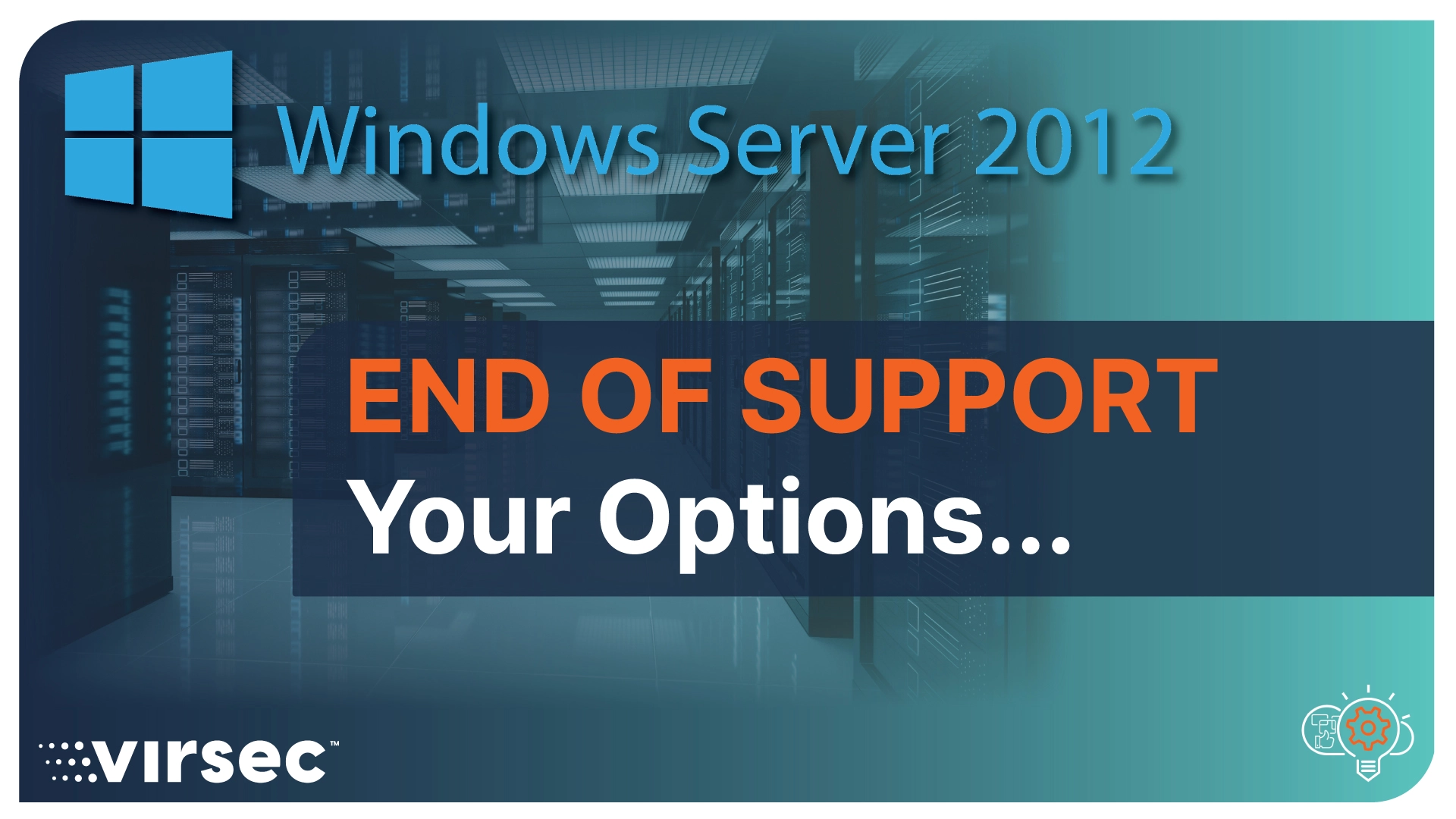If there ever was a consensus in cybersecurity, it’s that legacy software is one of the weakest links in IT infrastructures.
It’s a given that it’s here. That it needs to go is less obvious and much, much easier said than done. So what do you do until that elusive future upgrade? Especially considering that old software dramatically increases the probability of devastating hacks and breaches. Remember Volt Typhoon? It is estimated to have caused problems worth $520B.
We believe the answer is strong (interim) protection. And since all things must start somewhere, here you’ll learn that a vulnerability management audit is where good things start for you and your legacy software.
Understanding Legacy Software
Legacy software — also known as outdated, aging, old, end-of-life, or end-of-support software — is software that is no longer officially supported.
For proprietary software, this means the vendor has discontinued updates and security patches. For open-source software, it means that the community, or a selected group within the community, has stopped improving and maintaining it.
Legacy software poses grave challenges to organizations, the primary six concerns being the following:
- Poor scalability
Outdated software was developed at a time when the software workload was much lighter than today. Hence, it’s difficult for it to handle the large volumes of data and user activity surges typical for today’s across-the-board digitalized world.
- Inadequate integration
Legacy software relies on older protocols and technologies that are incompatible with contemporary standards and software. It is, therefore, highly challenging to extend its functionalities and make it work in unison with other components within the modern software ecosystem. - Degraded performance
Old software means an old codebase, which implies execution that isn’t optimized for today’s requirements and expectations. The consequence is slow and glitchy operation. - High maintenance costs
Legacy software lacks official support by definition. To overcome this obstacle, you can either opt for extended custom support (if available) or seek specialist support.
The first one is expensive due to its custom nature, while the latter is costly due to the scarcity of expertise and specialized knowledge available on the labor market. - Unaddressed security risks
Security is an essential function of support. Without security patches, your software can’t keep up with the incredibly fast-paced evolution of the threat landscape.
The absence of security updates leaves your software highly vulnerable. Add to this that traditional EDRs do not support — or are stopping — the support of legacy software, and the result is an immensely increased probability of a whole range of cyberattacks targeting your old software. - Limited compliance
It’s challenging for old software to meet the latest versions of compliance requirements, such as HIPAA, GDPR, PCI DSS, and other regulations and directives. Without being able to meet compliance requirements, you risk a damaged reputation, fines, and even criminal charges.
Despite all the challenges and concerns, one thing is for sure: Legacy software is here to stay. It is and will continue to be an integral part of IT infrastructures, powering mission-critical aspects of businesses and organizations.
The 2024 “Open Source Security and Risk Analysis” report by Black Duck indicates how deeply embedded legacy software is in information environments today. As many as 91% of the analyzed codebases included software components at least ten versions older than the current version.
Moreover, Eric Goldstein, Executive Assistant Director in CISA, states that the US government itself is probably the largest consumer of legacy software.
Consequently, outdated software should not and cannot be banned or dispensed with. The million-dollar question, then, is how to protect it, especially considering that an upgrade may not be a practicable or forthcoming option.
Legacy Software Risks
With discontinued support, it’s no wonder end-of-life software is a top target for threat actors. Some of the most pressing dangers of using it include the following:
- Large attack surface: Outdated software is unpatched for new and, depending on its age, not that new vulnerabilities. Hence, it can suffer from a myriad of security issues and provide countless entry points for attackers.
- Weak access controls: Old software typically has subpar authorization, authentication, and permission mechanisms. In addition, it is difficult to implement modern access controls, such as MFA and OAuth.
- Poor data protection: End-of-life software may rely on outdated encryption methods and algorithms (e.g., TLS 1.0 and MD5), lack native encryption support, rely on hard-coded keys, and not support robust encryption protocols like AES-256. All these factors increase the chances of a data breach or leakage.
- Insufficient visibility or a complete lack thereof: Limited monitoring and logging options, nonexistent or incomplete inventory, shadow IT, and dormant software are all knotty problems prone to abuse tightly associated with legacy software.
- Supply chain risks: Unchecked and outdated third-party dependencies introduce even more latent security risks in your information environment.
The Importance of a Vulnerability Management Audit
The longer your software has been without support, the higher the number of accumulated vulnerabilities. End-of-support software accumulates 218 CVEs every six months. That’s over 400 new vulnerabilities each year, which is a frightening number.
The inevitable corollary of this predicament is that you must take a resolute step toward addressing those security issues — sooner rather than later. You need visibility into your legacy software vulnerabilities. This allows you to understand the problems that need solving. This visibility begins with a legacy software vulnerability management audit.
A legacy software vulnerability management audit is a systematic and comprehensive evaluation of outdated software that enables you to identify, categorize, prioritize, and remediate exploitable security vulnerabilities that can result in compromised systems, breached and leaked data, and disrupted business operations. It helps you:
- Understand how exactly to protect your outdated software due to the insights provided through the audit.
- Reduce the risk of security incidents by remediating critical vulnerabilities and fortifying protection measures in a timely fashion.
- Improve asset inventory by finding outdated software components you didn’t know existed.
- Protect sensitive data by discovering which old software components operate with sensitive business and user information.
- Manage security posture more efficiently by generating reports and tracking vulnerabilities between audits.
Key Components of a Legacy Software Vulnerability Audit
The key components of a vulnerability management audit for legacy software are the following:
- Scope and objective definition: Specify the systems and applications that will be audited and the expected outcome.
- Asset management: Catalog all the discovered pieces of legacy software.
- Vulnerability scanning: Uncover old and new CVEs in your old software.
- Risk assessment: Establish which vulnerabilities are the most severe and likely to be exploited.
- Configuration and supply chain risk review: Determine exploitable security misconfigurations and risks coming from legacy dependencies.
- Compliance evaluation: Find whether your legacy software meets compliance requirements applicable to your business and industry.
- Patch and update assessment: Evaluate whether you’ve missed existing patches and updates and see how to mitigate risks in their absence.
- Security mitigation planning: Devise a plan of how to protect and secure your end-of-life software.
- Incident response assessment: Close gaps in your incident response plan in light of the discovered legacy software vulnerabilities and evaluate how well you’d be prepared in the case of cyberattacks involving your end-of-support software.
- Detailed reporting: Generate granular reports that contain the findings and include remediation guidelines.
- Continuous monitoring: Implement security mechanisms that allow you to monitor the behavior of your old software.
- Post-audit review: Discuss and assess the effectiveness of the audit with stakeholders and create a plan for managing legacy software vulnerabilities.
Why You Should Conduct a Legacy Software Vulnerability Audit
Along with discovering security risks, a vulnerability management audit helps you achieve many other significant objectives:
- Security risk mitigation
Understanding the attack surface of your legacy software through vulnerability discovery, and learning which issues require immediate attention, allows you to mitigate severe security risks promptly. - Regulatory compliance
Knowing whether your outdated software fails to meet regulatory requirements and industry standards due to, say, jeopardizing sensitive data, puts you in a good spot to resolve compliance issues. - Operational resilience
Addressing critical vulnerabilities before threat actors discover and exploit them, causing operational disruption, allows you to fortify the protection of your end-of-life software. It also gives you the opportunity to make your operations more resilient and support business continuity. - Cost-effectiveness
Proactive security is more cost-effective than reactive security. Discovering and remediating vulnerabilities before they turn into full-blown security incidents is always cheaper than recovering and controlling damage after a breach. - Strategic planning
A vulnerability management audit provides the necessary insights to embrace a strategic approach to cybersecurity budgeting and make informed decisions about securing, protecting, or possibly replacing vulnerable outdated software.
Virsec’s Zero Trust Approach to Securing Legacy Software
Virsec is a security platform purpose-built to protect legacy servers and applications. It specializes in operating systems such as Windows Server 2003, 2008, 2012, Red Hat Enterprise Linux, CentOS, Ubuntu, and SUSE, and the applications running on them.
Virsec provides discovery and visibility through automated analysis of processes, executables, and scripts running on your workloads and verifies their trust.
In addition, thanks to its zero-trust runtime defense, the platform creates trust policies which allow for only trusted applications while blocking others.
To further protect your outdated software, Virsec stops threats in milliseconds, preventing them from causing damage. It also continuously monitors your workload activities to detect anomalous behavior that may point to an ongoing cyberattack.
Finally, Virsec’s suite of security controls allows your legacy software to meet compliance standards and noticeably reduce costs by preventing your legacy workloads and applications from becoming victims of ransomware, zero-day, RCE, malware, and similar attacks.
Conclusion
While legacy software can be hard to support, we’ve shown that it’s not something you can just dispense with, considering its vital role in businesses and organizations. Rather, it requires robust protection that begins with a vulnerability management audit. Such an audit can mitigate the primary concerns and risks related to outdated software.
Virsec is a strong player in this space, with its key features that can help you achieve better legacy software protection. We offer a vulnerability management demo at no cost, so take advantage of this offer and let us assist in protecting your legacy software!
Request a free vulnerability audit and uncover the security gaps in your legacy software.




